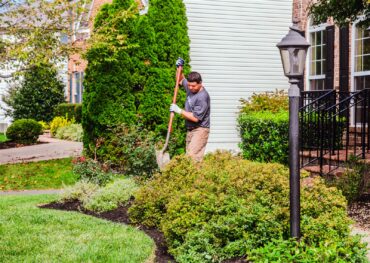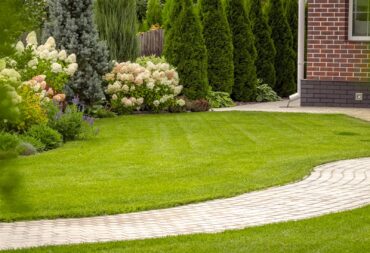 Your backyard or local park is home to ballgames and barbecues with family and friends. But did you know that it’s so much more? The trees, grass, plants and flowers in your yard, local parks and ballfields play an important role in fighting climate change.
Your backyard or local park is home to ballgames and barbecues with family and friends. But did you know that it’s so much more? The trees, grass, plants and flowers in your yard, local parks and ballfields play an important role in fighting climate change.
The planet is growing warmer because there is too much carbon in the atmosphere, which acts as a blanket that traps greenhouse gases. Excess carbon is added to the atmosphere in all sorts of ways, but the easiest way to “sequester” the carbon (storing it in the ground) is through photosynthesis of trees, grasses and plants. So, the more plants, trees and grass you have around you, the more carbon is removed from the air, and the more oxygen is produced.
Also, a properly landscaped yard, including trees for windbreaks and shade, can save energy by warming your home or office building in the winter and keeping it cooler in the summer.
“Many people don’t realize the positive impact they can have by adding plants and trees to their landscape and maintaining a healthy lawn,” said Britt Wood, National Association of Landscape Professionals CEO. “Landscape and lawn care professionals help home and business owners create climate-friendly landscapes that clean the air and help save energy.”
 Help Your Yard Become a Climate Change Fighter
Help Your Yard Become a Climate Change Fighter
Follow these tips to boost your yard’s climate change-fighting abilities.
Add more trees and shrubs. When you plant more trees, plants and shrubs in your yard, you are not only sequestering carbon, you are also producing oxygen and cleaning and filtering the air you breathe.
Ensure that your lawn is healthy. Turfgrass is excellent at capturing carbon and turning it into organic matter that improves soil quality. Keep your lawn healthy to capture more carbon and filter stormwater. If you aren’t sure how to improve your soil conditions or build stronger turfgrass, consult a lawn care expert who can help determine a care plan for your particular grass variety and soil quality.
Plant trees in the right spots. By planting trees and screening shrubs that help block the prevailing winds, you’ll reduce the impact of the wind on your house, keeping it warmer in winter. And, by planting shade trees in the right places, you can cool your home in the summer.
Make the right plant choices. When you choose plants adapted to your particular climate zone and planting them in their ideal growing conditions (full sun, shade or partial shade), they will thrive and use less water to maintain. If you aren’t sure which plants are best for your yard, consult a landscape professional.
For information about making your yard climate-friendly or to find a landscape or lawn care pro near you, visit loveyourlandscape.org.























